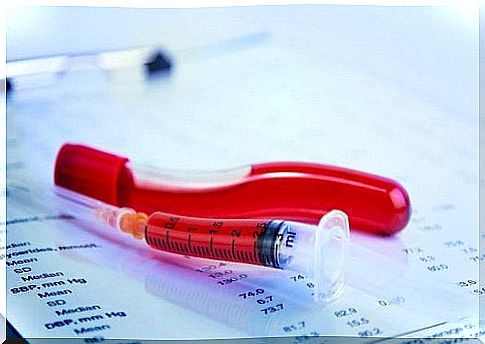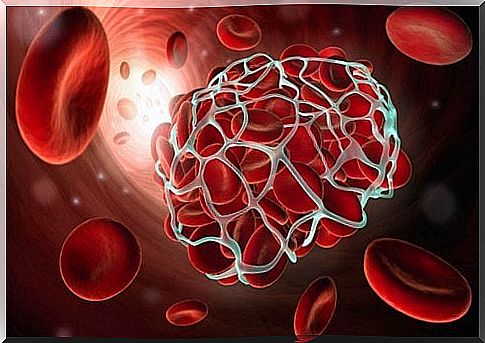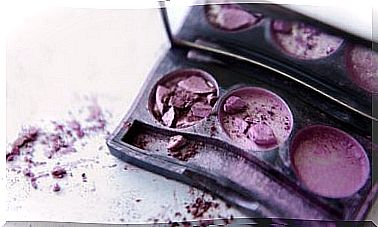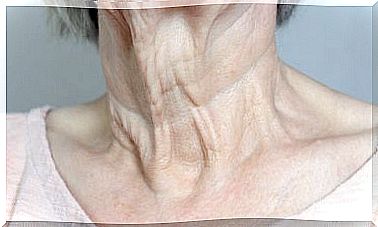Heparin: What Is It And How Is It Administered?
Heparins are drugs that are administered intravenously and have a very powerful anticoagulant effect. We speak of heparins in the plural because there are two types: low molecular weight heparin and standard or unfractionated heparin.
They are administered parenterally because orally they are poorly absorbed. Also, digestive enzymes inactivate them. Therefore, they are only administered by injection.
Among the different routes of parenteral administration, subcutaneous is the classic form of administration, both for low molecular weight heparin and for unfractionated heparin. The intravenous line is used to administer unfractionated heparin in emergency situations.
Unfractionated heparin or UFH

This type of heparin is made up of a heterogeneous mixture of different polysaccharides. These biomolecules can vary in both size and weight.
The weight is between 6,000 and 40,000 daltons, the average weight being 15,000 daltons. The chains that make up this type of heparin contain glucosamine and sulphated glucuronide or iduronic acid.
Low molecular weight heparin or LMWH
As for the low molecular weight heparins, these come from the fracture of the previous ones. They are also made up of polysaccharide chains, but the average molecular weight is much lower; it is between 4,000 and 5,000 daltons.
Therapeutic indications
Heparins, as we already know, are used in situations where rapid and short-lasting anticoagulant action is needed. The most characteristic cases are the prevention and treatment of deep vein thrombosis, as well as in surgeries, both high and low risk.
Regarding the treatment of deep vein thrombosis, whether it occurs with pulmonary embolism or not, it is started with heparin until the prothrombin time stabilizes. Afterwards, the administration of oral anticoagulants continues. In addition, either of the two types of heparins that we have mentioned can be used for this purpose.
However, low molecular weight heparin has a number of advantages, such as fewer adverse effects and the ability to administer it in a single daily dose. This dose is based on the patient’s body weight, so it is not necessary to control the antithrombotic effect, since it does not interact with plasma proteins.
How do heparins carry out their effect in the body?

In order to fulfill its therapeutic objective and trigger its antithrombotic and anticoagulant effect, heparins are capable of inhibiting factor Xa and factor IIa, respectively.
These factors are closely related to the formation of clots and thrombi. Therefore, by inhibiting their action, heparins prevent their formation.
Low molecular weight heparins have a lower inhibitory activity than unfractionated ones. However, they also have a lower risk of bleeding.
Adverse effects of heparins
Like all medicines, heparin treatment can be accompanied by a number of adverse effects. However, those with low molecular weight have fewer adverse reactions than the unfractionated ones.
Adverse effects are all undesirable and unintended events that occur in an expected way with the use of a medicine. In this sense, the most frequent adverse effects with the use of heparins are:
- Hemorrhages: they are not so frequent when treatment is focused on prevention, since the doses are lower. In patients with kidney problems, the dose should be adjusted, since it favors the appearance of this adverse effect.
- Thrombocytopenia: not dose related, as with bleeding. It is also not related to age or the route of administration. It is a response that varies from person to person.
- Skin necrosis.
- Hypersensitivity reactions.
- Hypoaldosteronism: low levels of the hormone aldosterone.
Finally, mention that the two types of heparins can produce a picture of osteoporosis. However, when the treatments are long-term, this effect is reduced.
Conclution
Heparins, both low molecular weight and unfractionated, are drugs used to prevent the formation of thrombi and clots. Above all, they are indicated in surgery and in the treatment and prevention of deep vein thrombosis.
They are drugs with a very powerful action and are not exempt from producing adverse effects. You can consult with your doctor or pharmacist any questions you have about this type of medicine.









